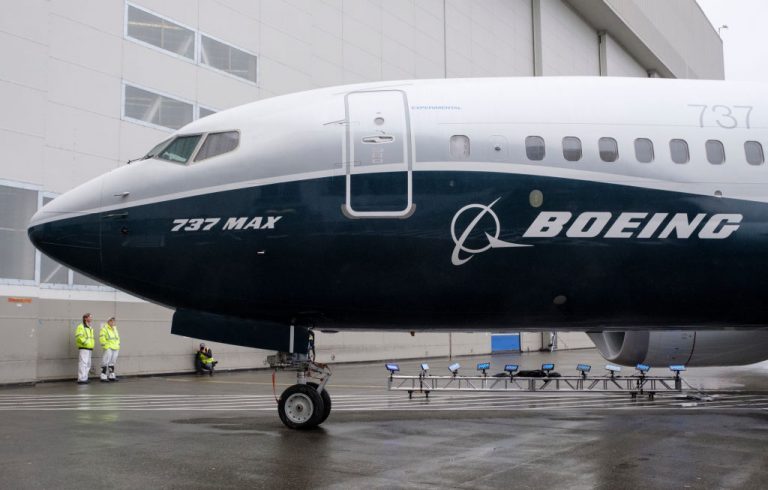American plane manufacturer Boeing has come under fire after the deadly crash of a China Eastern jet on March 21. The incident marks the latest crisis for the largest aerospace company in the world — raising the prospect of renewed regulatory scrutiny over its aircrafts.
It could be weeks or even months before investigators identify what caused the Boeing 737-800 NG operated by China Eastern Airlines to plunge vertically from the sky at more than 350 miles per hour.
The outcome of the investigation could weigh heavily on Boeing, which recently overcame years of troubles involving a newer variant of the single-aisle 737, the Max, and has had long delays in producing and delivering the twin-aisle aircraft 787 Dreamliner, which came into service in 2011.
“I think it’s going to be very important to see what actually happened with this particular incident because there’s a credibility concern,” said Rob Spingarn, managing director at Melius Research, a financial analysis firm. “I think the investment community will pause to some extent on Boeing until that information is out.”
No signs of life amid smoldering debris
The China Eastern aircraft, Flight MU5735, was flying from the city of Kunming to Guangzhou and slammed into a thick forest of bamboo and rocks in Guangxi Province at around 3PM yesterday (March 21). According to data from FlightRadar24, the six-year-old Boeing 737-800 was last tracked at 2:22PM before all communications were lost.
Success
You are now signed up for our newsletter
Success
Check your email to complete sign up
“China Eastern Airlines has activated the emergency mechanism, dispatched a working group to the scene, and opened a special line for emergency assistance to family members,” the airline said in a statement posted to its Weibo account.

Following the crash, Chinese leader Xi Jinping said he was shocked to hear about the accident and called for an “all-out rescue operation” and investigation in order to “identify the causes of the accident,” state media reported. Hundreds of rescue workers were swiftly dispatched from Guangxi and neighboring Guangdong Province after villagers saw thick smoke emitting from the crash site.
All 737-800s in China Eastern’s fleet were ordered grounded after the accident took place, while Chinese mouthpiece CCTV said the airliner had set up nine teams to deal with “aircraft disposal, accident investigation, family assistance and other pressing matters.”
Boeing: ‘Thousands of [our planes] traverse safely through the globe everyday’
The 737-800 is one of the world’s most common jetliners, with more than 4,200 in service worldwide and 1,177 in Chinese airliners. Thousands of 737-800 NG planes safely traverse the globe everyday, Boeing said in a statement following Monday’s crash.
Many industry analysts and experts were therefore discouraged from speculating that Monday’s crash indicated any fundamental design flaw. But Boeing’s stock fell 3.6 percent nonetheless and shares of China Eastern ended 6.5 percent lower in Hong Kong’s trading.
Last year was Boeing’s best year in sales since 2018, with net orders of 535 planes. The company has endured repeated setbacks however, including a $3.5 billion charge in the final three months of 2021 from the Dreamliner delays over quality control. The holdups resulted in a $4.2 billion loss for that quarter.
China is also the second-largest market for Boeing planes. Last year, the company forecast that the number of commercial aircrafts in China would double by 2040, with airlines there needing 8,700 new planes, valued at about $1.47 trillion.
Boeing riddled with financial problems
In addition to its difficulties with their Max and Dreamliner jets, Boeing has had to contend with an industry slowdown resulting from the COVID-19 pandemic. With air travel only now starting to slowly recover, airlines have cut back plans to buy new planes, and many are still reeling from massive financial losses incurred during the pandemic.
Those issues coupled with regulatory rebukes, brought about several lawsuits and billions of dollars in fines, settlements and lost orders. The federal government approved the Max for flight again in late 2020 but required Boeing to make certain changes to the aircraft’s design. That decision prompted similar approval from other countries, but Chinese regulators only just granted approval in early December.
China’s last fatal airliner accident took place in 2010, when an Embraer E-190 jet flown by Henan Airlines crashed on approach to Yichun airport from Harbin in low visibility. 42 of the 96 people aboard were killed.
The deadliest accident in modern Chinese history was in June 1994, when a Russian-designed Tupolev Tu-154 jet — a plane notorious for accidents — broke in half mid-flight due to an autopilot malfunction that caused violent shaking and overstressed the airframe. All 160 people on board were killed.
















